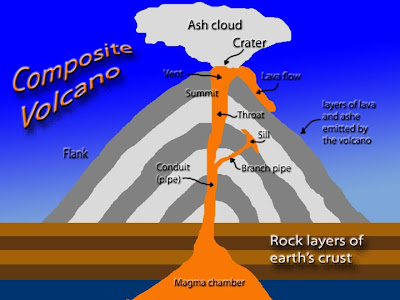Mount Ararat is a snow-capped, dormant volcanic cone in Turkey. It has two peaks: Greater Ararat (the highest peak in Turkey, and the entire Armenian plateau with an elevation of 5,137 m or 16,854 ft) and Lesser Ararat (with an elevation of 3,896 m or 12,782 ft).
The Ararat massif is about 40 km (25 mi) in diameter. The Iran-Turkey boundary skirts east of Lesser Ararat, the lower peak of the Ararat massif. It was in this area that, by the Tehran Convention of 1932, a border change was made in Turkey’s favour, allowing it to occupy the eastern flank of Lesser Ararat.

Composite Cone volcanoes form when runny lava escapes through a fissure and flows a long way. Composite volcanoes are tall cone-shaped mountains that are typically steeply-sided, symmetrical cones of large dimensions. The volcano is built up by the accumulation of material erupted through the conduit and increases in size as lava, cinders, ash etc. are added to its slopes. Andesitic magma tends to form composite cones.When volcanic activity ceases, erosion begins to destroy the cone. After thousands of years, the cone is stripped away and the hardened magma filling the conduit (the volcanic plug) and fissures (the dikes) become exposed, and it too is slowly reduced by erosion. Finally, all that is left is the plug or “volcanic neck” and dike complex projecting above the land surface.
 World Insights Bringing You best of world at one place
World Insights Bringing You best of world at one place